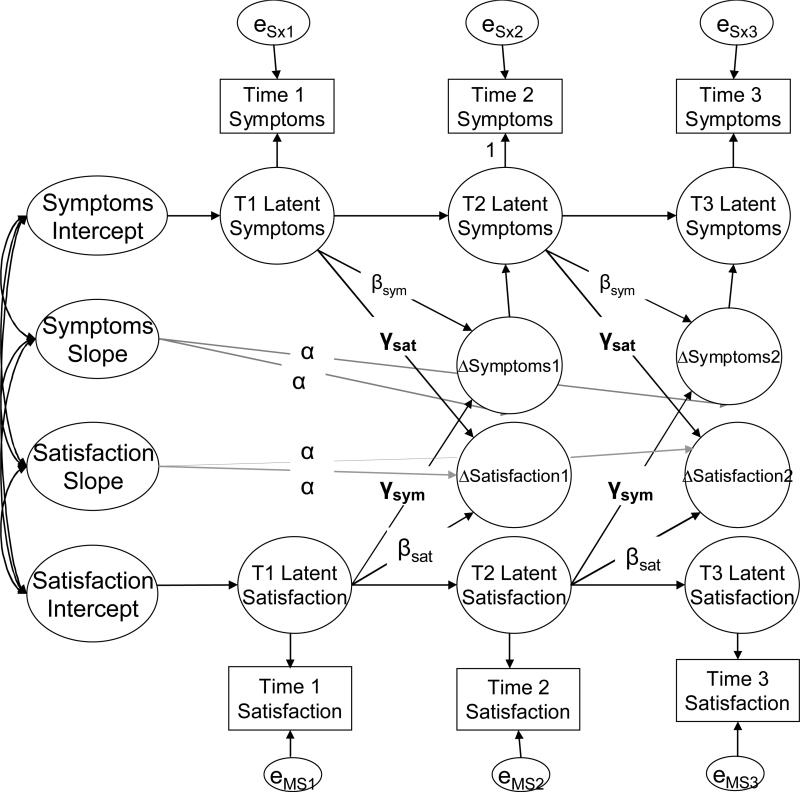Figure 1.
Example of a bivariate dynamic latent difference score model examining the transactional relation between depressive symptoms and marital satisfaction.
Note. Sym and Sx= depressive symptoms. Sat and MS = marital satisfaction. ΔSymptoms (Satisfaction) 1 represents latent change score from Time 1 to Time 2 and ΔSymptoms (Satisfaction) 2 represents the latent change from Time 2 to Time 3; β represents a time-invariant proportional coefficient (i.e., proportion of previous score that predicts subsequent difference score), γ represents a time-invariant coupling parameter (i.e., proportion of score on another variable that predicts subsequent difference score). For identification purposes, α set to 1, which corresponds to linear systematic growth. Unlabeled one-headed arrow paths set to 1. Covariances between satisfaction and symptom error variances within the same time point (set equal across time) were estimated but not depicted in the figure.

